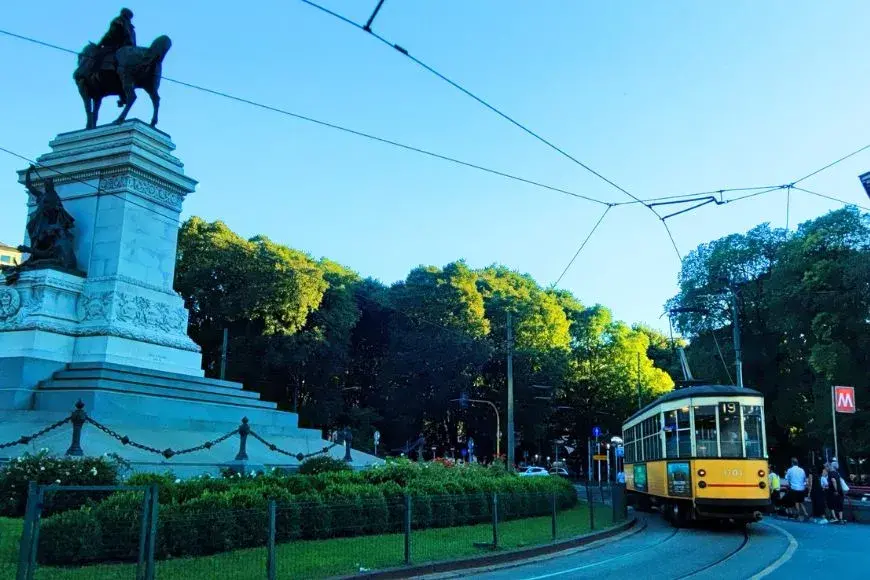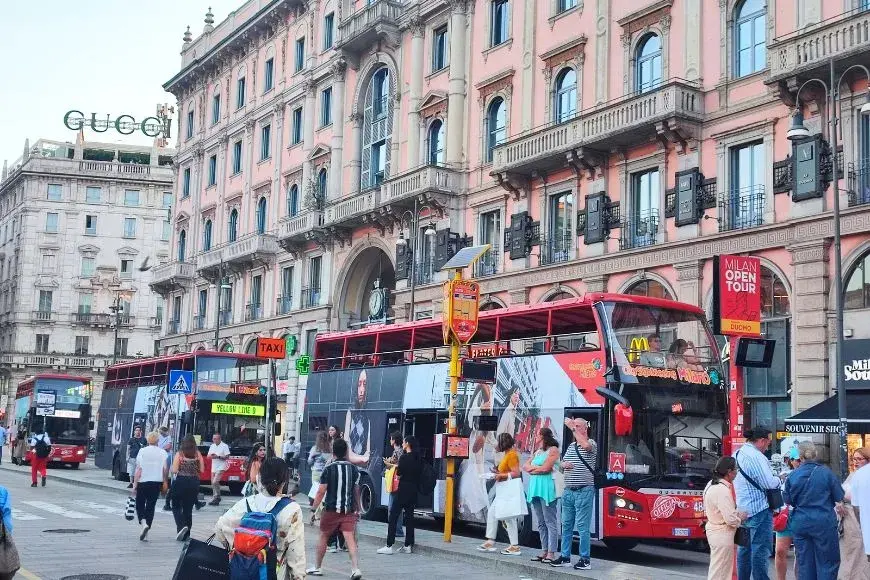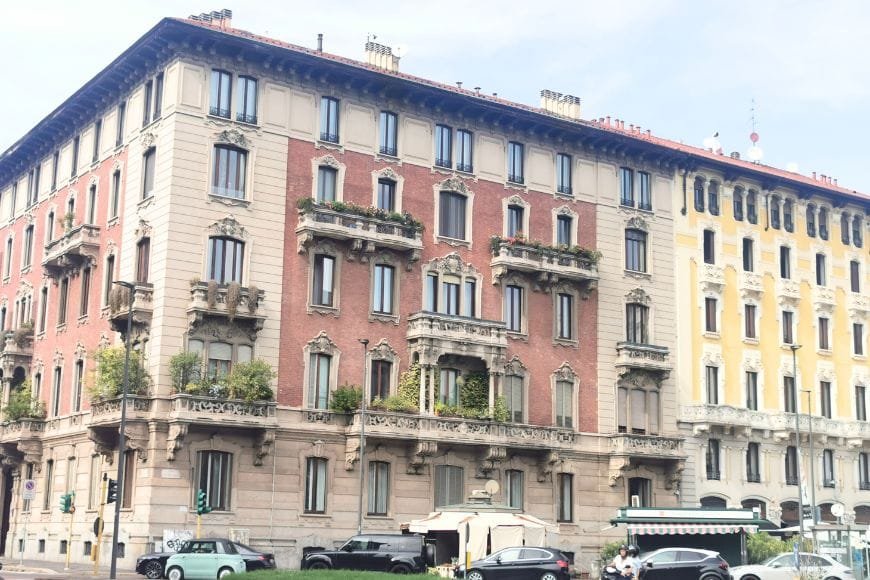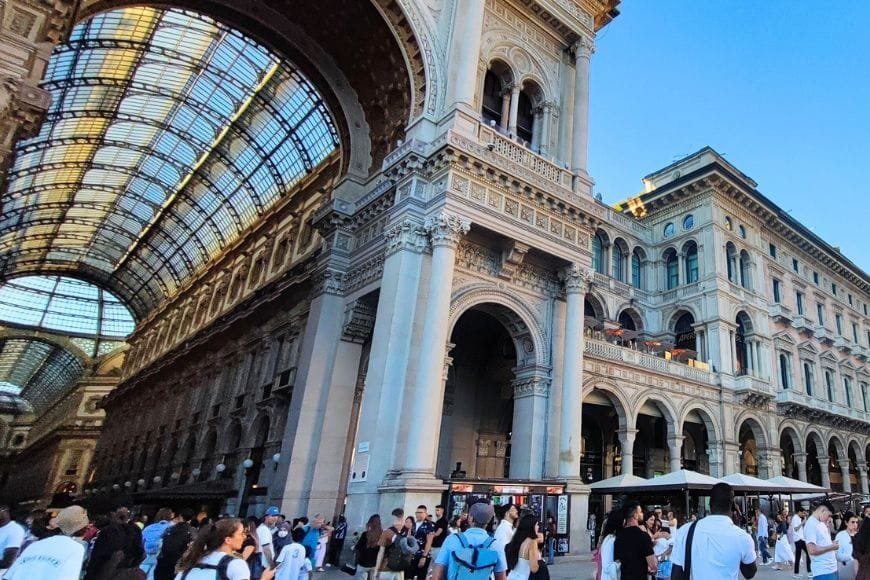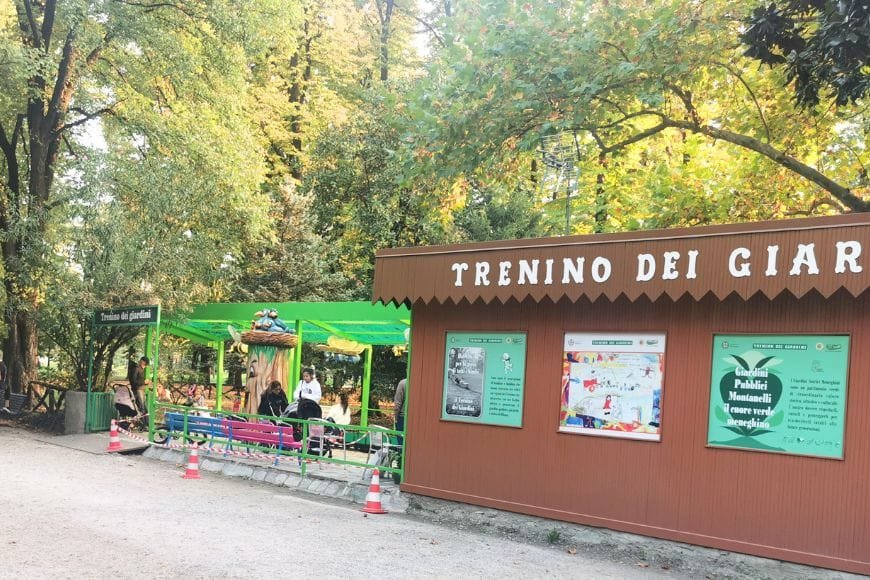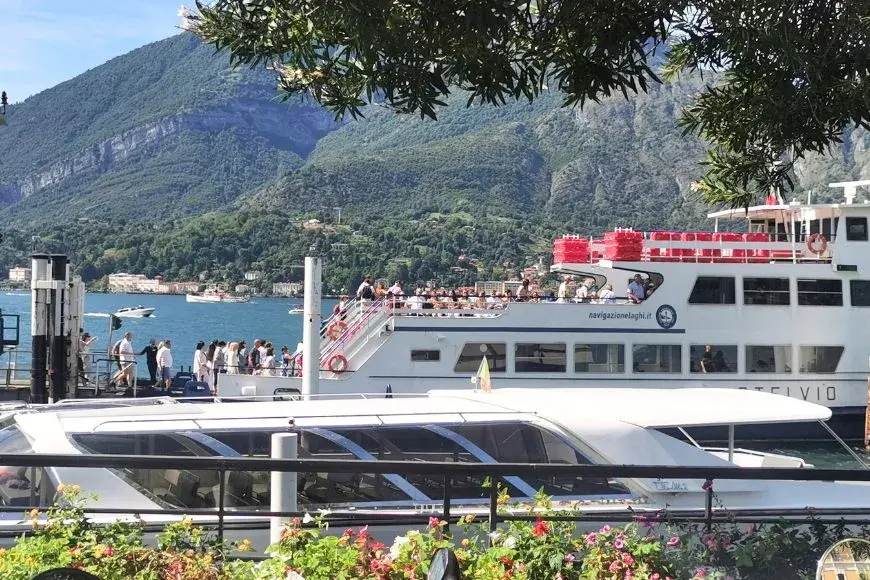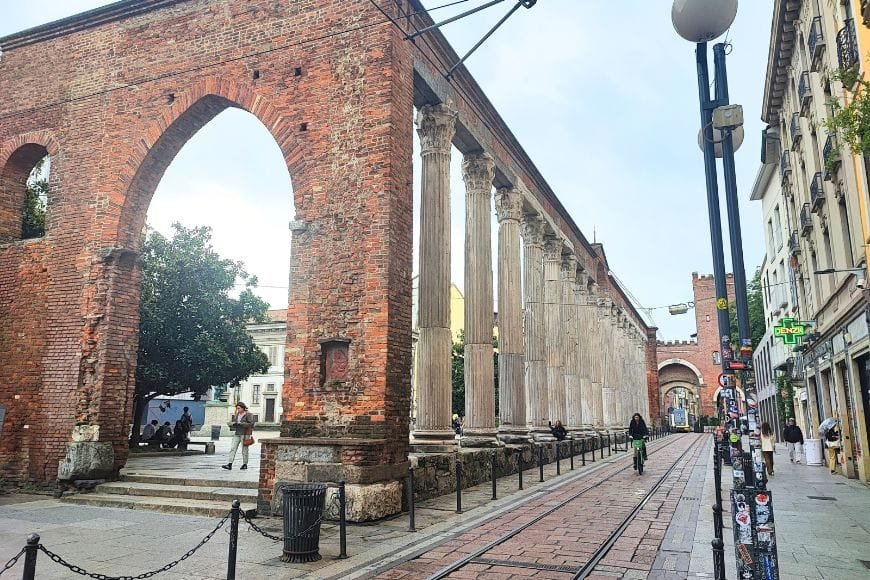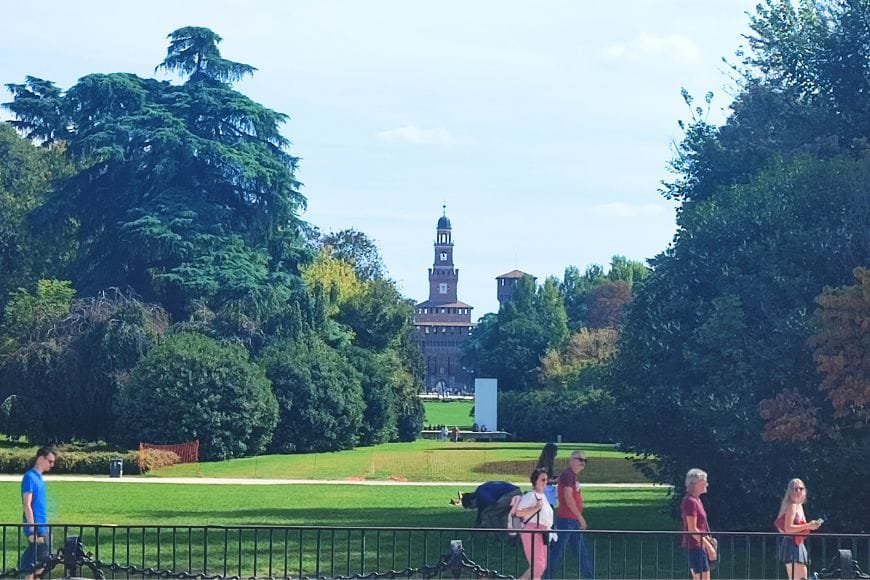7 Days Italy Itinerary: Perfect First-Timer’s Guide for 2025

by Luca | Last Updated December 20, 2025
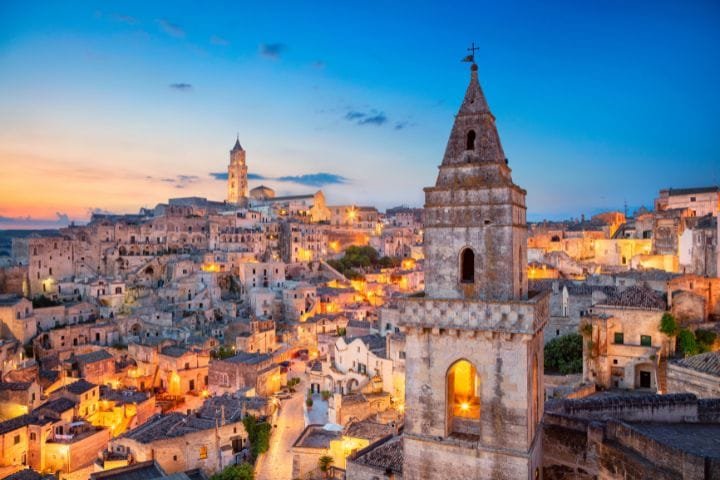
Look, I get it – planning your first trip to Italy feels totally overwhelming. Trust me, as someone who has lived in Florence my whole life and watched thousands of first-time visitors figure this out, I know exactly what you’re going through. Seven days to see Italy? Seems impossible, right?
Here’s the thing, though – a week is actually the perfect amount of time for your first Italian adventure. Yeah, you won’t see everything (honestly, I’ve lived here 30 years and I’m still discovering new stuff), but still, seven days gives you enough time to hit the absolute must-sees without feeling like you’re sprinting through airports and train stations every single day.
I’ve helped so many friends and visitors plan their 7 days Italy itinerary, and the people who have the best time are the ones who keep it simple and don’t try to cram in every single place they’ve seen on Instagram.
Rome, Florence, Venice – that’s your golden triangle right there. Add maybe a day trip or a quick stop in Milan, and boom – you’ve got yourself an incredible introduction to what makes Italy so special.
This guide breaks down exactly how to spend one week in Italy as a first timer, including day-by-day plans, real costs (because nobody likes budget surprises), transportation tips, and all those little insider details that make the difference between a good trip and an absolutely unforgettable one.
Plus, I’ll include some alternative routes in case the classic path isn’t quite your style. Ready to plan the Italian adventure you’ve been dreaming about? Let’s dive in!
Why 7 Days in Italy is Perfect for First-Timers
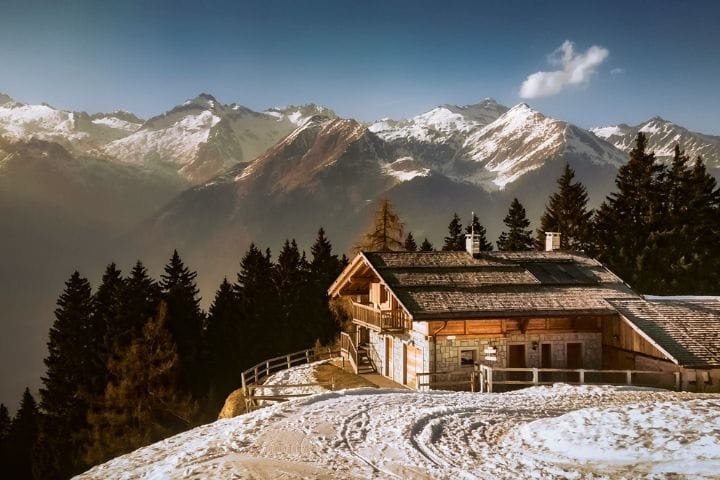
Seven days in Italy lets you experience the country’s most iconic cities and regions without feeling rushed. From my experience watching visitors explore my country, a week hits that sweet spot where you can actually relax and enjoy each place instead of constantly packing and unpacking. You’ve got enough time to wander through Rome’s ancient streets, fall in love with Florence’s Renaissance magic, and get lost in Venice’s canals without that horrible rushed feeling that comes with shorter trips.
Plus, seven days works perfectly with flight schedules and doesn’t require tons of vacation time. Most international flights connect easily through Rome or Milan, you can do the classic triangle route without backtracking, and you’ll get a real taste of Italian food, culture, and that laid-back lifestyle we’re famous for.
It’s long enough to feel like a proper vacation but not so long that you’ll blow your entire year’s travel budget – basically the perfect introduction to why people keep coming back to Italy again and again.
How to Plan Your 7 Day Italy Itinerary in 2025
Alright, let’s get into the nitty-gritty of actually planning this thing. The key to a successful week in Italy is nailing three things: timing, logistics, and transportation. Get these right, and everything else just flows.
Best Time to Visit Italy
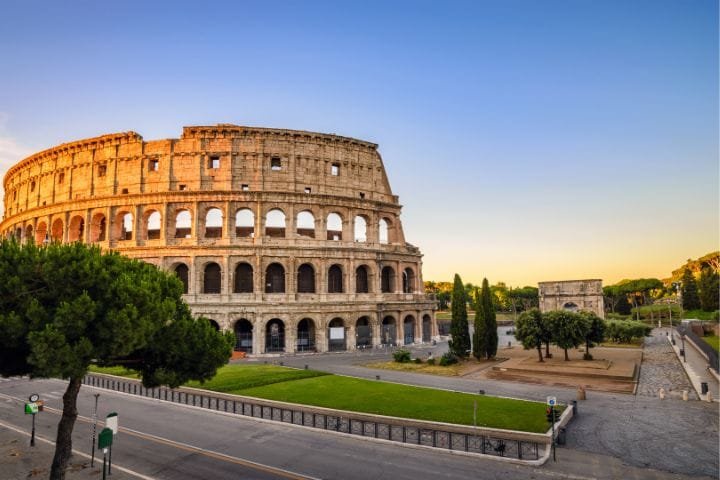
If you’re wondering when is the best time to visit Italy, the short answer is spring or fall. April–May and September–October bring mild temperatures, blooming or golden landscapes, and fewer crowds compared to summer. You’ll be able to explore iconic spots like Rome, Florence, and Venice without feeling crushed by the tourist rush, and most attractions are running on a full schedule.
Summer in Italy (June–August) is peak season—expect intense heat, packed streets, and higher prices. That said, if summer is your only option, you can still make it work by booking well in advance, starting your sightseeing early in the morning, and heading to coastal breezes or mountain escapes in the afternoons.
Winter in Italy (November–March) offers a different kind of magic. Think Christmas markets, twinkling lights, and lower hotel rates. Skiing in the Alps or visiting cities like Florence and Rome without crowds can be unforgettable. Just keep in mind that some coastal destinations may partially shut down, and the weather can be unpredictable.
Seasonal Tips at a Glance
- Spring (April–May): Flower festivals, comfortable temperatures, fewer crowds.
- Summer (June–August): Peak crowds, higher prices, best for coastal trips and festivals.
- Fall (September–October): Wine harvest season, mild weather, fewer tourists.
- Winter (November–March): Christmas markets, off-season deals, great for skiing and city breaks.
Get our FREE Italy
Travel Guide
E-Book
This printable guide is your ultimate companion for exploring Italy, with insider tips, detailed itineraries, transportation advice, must-see attractions, and more.
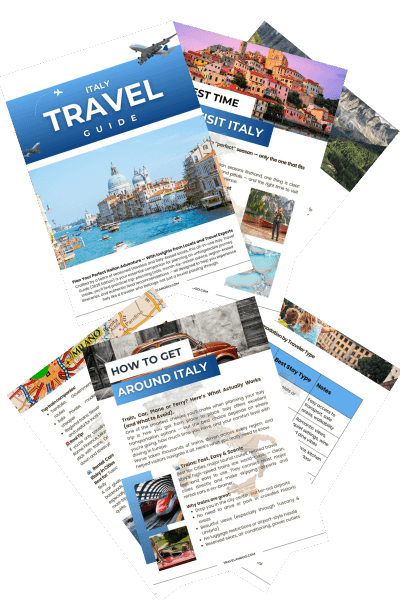
Entry & Exit Airports
Here’s the smart move: fly into Rome and out of Milan or Venice. This “open-jaw” thing saves you from backtracking and makes the whole route way more logical. Rome’s Fiumicino is the biggest international hub, so you’ll have tons of flight options, then you can easily catch your flight home from Milan Malpensa or Venice Marco Polo.
If open-jaw flights are too pricey or complicated, just fly round-trip to Rome and do the loop back – totally doable, just adds one extra train ride at the end. Milan’s also a solid option if you want to start up north and work your way down.
How to Get Around Italy
If you’re wondering the best way to travel in Italy, the answer depends on your route and style. For this itinerary, trains are the clear winner. Italy’s high-speed rail network (Frecciarossa, Italo) is fast, comfortable, and connects major cities like Rome, Florence, Venice, and Milan directly — no airport transfers or traffic jams. It’s a big reason why this Italy transportation guide recommends trains for most first-time visitors.
High-speed trains cost around €25–75 if booked in advance, while regional trains are slower but cheaper (€8–25). I take the Rome–Florence high-speed route often — just 1.5 hours, clean, comfortable, and it drops you right in the heart of the city. Download the Trenitalia app to book ahead, save money, and secure your seat.
That said, renting a car can be fantastic if you plan to explore Tuscany’s rolling hills, small wine villages, or less-accessible regions like the Dolomites and Sicily. Just be prepared for Italian driving quirks, limited parking, and ZTL zones that can fine you months after your trip.
Transportation Pros & Cons:
🚄 Trains
- Pros: Fast, city center to city center, no parking stress, scenic routes.
- Cons: Fixed schedules, less flexibility for remote towns.
- Cost: High-speed €25–75, regional €8–25.
🚗 Car Rental
- Pros: Total freedom, perfect for countryside drives, winery visits, and spontaneous detours.
- Cons: Traffic, €20–40/day city parking, ZTL fines, fuel & toll costs.
- Cost: €30–60/day + fuel & tolls.
Recommended Booking Sites:
- Trains: Trenitalia (official, cheapest) or Italo for high-speed.
- Car Rentals: DiscoverCars.com — compare deals and book early in peak season.
7 Days Italy Itinerary — Quick Overview Table
This one week Italy itinerary is a classic first-timer’s journey, taking you from the ancient wonders of Rome to the Renaissance masterpieces of Florence and the romantic waterways of Venice.
Along the way, you’ll walk through centuries of history, admire world-class art, and savor regional specialties — from Roman pasta to Tuscan wine.
Perfect for traveling by high-speed train or car, this route balances must-see landmarks with time to explore hidden corners, making it ideal for travelers who want the best of Italy in just one unforgettable week.
Here’s your week at a glance – this is the route I recommend to pretty much everyone visiting Italy for the first time. It’s tried and tested, hits all the major highlights, and flows really well logistically.
| Days | Location | Main Highlights |
|---|---|---|
| Day 1–2 | 🇮🇹 Rome | 🏛 Colosseum, Roman Forum, Trevi Fountain, Vatican City. 🍷 Evening in Trastevere for authentic dining. |
| Day 3–4 | 🇮🇹 Florence & Tuscany | ⛪ Duomo, 🎨 Uffizi Gallery, 🌉 Ponte Vecchio. 🍇 Day trip to Pisa, Siena, or Chianti wine region. |
| Day 5–6 | 🇮🇹 Venice | 🚤 Grand Canal, 🌉 Rialto Bridge, ⛪ St. Mark’s Basilica. 🛶 Gondola ride & Murano/Burano islands. |
| Day 7 | 🇮🇹 Milan | ✈ If flying from Milan: ⛪ Duomo & 🛍 Galleria Vittorio Emanuele II quick tour. |
Why this route rocks: You’re moving north to south (or vice versa) without any crazy backtracking, train connections are super easy, and each city gives you a totally different vibe. Rome’s all about ancient history and energy, Florence is Renaissance art and amazing food, and Venice is pure magic floating on water. Perfect introduction to what makes Italy so incredible.
Pro tip from living here: If you’re flying out of Rome, just do this route in reverse – start in Milan/Venice and work your way back. The train connections work just as well in either direction, and you’ll end your trip in Rome, which honestly never gets old, even for us locals.
Day 1–2: Rome
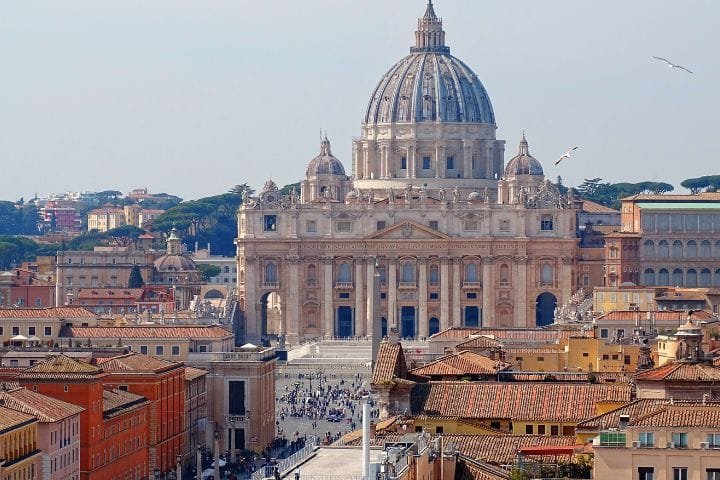
Rome is absolutely wild – like, you’re literally walking through 2,000+ years of history while dodging Vespas and trying to figure out where to get the best carbonara. It’s chaotic, loud, and completely overwhelming in the best possible way. Two days give you enough time to hit the major stuff without feeling totally rushed.
Things to Do in Rome
The best things to do in Rome blend ancient history with vibrant modern life – from exploring the iconic Colosseum and Vatican City to wandering through charming neighborhoods like Trastevere for authentic dining experiences. With two days, you can comfortably see the major highlights while getting a real feel for Roman culture and lifestyle.
Day 1: Ancient Rome & Classic Highlights
Colosseum: This is the big one – where gladiators actually fought and 50,000 Romans cheered for blood. Book the underground and upper levels tour if you can; it’s absolutely worth the extra euros.
Go early morning (8 AM) or late afternoon to avoid the worst crowds and crazy heat.
Roman Forum: Right next to the Colosseum, this was basically ancient Rome’s downtown – temples, government buildings, markets, the whole deal. Get the audio guide, or you’ll just be staring at a bunch of old rocks. The view from Palatine Hill over the whole area is incredible.

Trevi Fountain: Yeah, super touristy, but honestly still magical. Throw a coin over your left shoulder with your right hand (old tradition says you’ll come back to Rome). The best time is early morning or late evening when it’s lit up and less crazy crowded.
Pantheon: This 2,000-year-old temple is completely free and totally mind-blowing. The dome was the biggest in the world for over 1,000 years, and there’s literally a hole in the roof that lets in rain and sunlight. Raphael is buried here, too.
Trastevere (Evening): My favorite neighborhood for evening wandering. Narrow medieval streets, ivy-covered buildings, amazing restaurants, and locals hanging out in piazzas. Cross the river at sunset and just get lost here – perfect way to end your first day.
Day 2: Vatican & More Hidden Gems
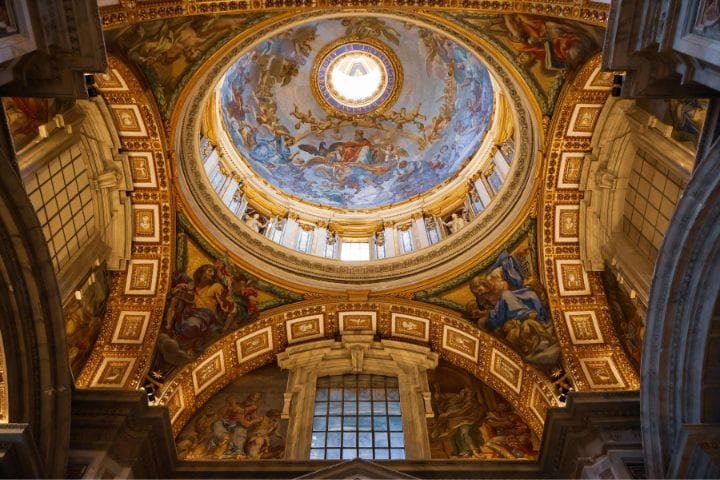
Vatican Museums & Sistine Chapel: Michelangelo’s ceiling is legitimately one of the most beautiful things you’ll ever see. The whole place is massive – we’re talking 9 miles of galleries. Book the early morning tour to skip lines and see it without shoulder-to-shoulder crowds. No photos in the Sistine Chapel (they’re serious about this).
St. Peter’s Basilica: Free to enter and absolutely massive – like, you could fit 60,000 people in here. Climb the dome if you’re not claustrophobic; the views over Rome are insane. Michelangelo’s Pietà alone is worth the visit.
Spanish Steps: 135 steps leading up to a gorgeous church with amazing city views. Great for people-watching and that classic Rome photo. The area around here is perfect for shopping if you’re into designer stuff.
Campo de’ Fiori: Morning flower and food market, evening party central. The whole square fills up with Romans drinking and socializing – grab a drink and join the scene. Way more authentic than the touristy bars near major sites.
Castel Sant’Angelo: Originally Hadrian’s tomb, then papal fortress, now a museum with killer views over the city and St. Peter’s. Way less crowded than other major sites but equally impressive.
Aventine Hill: Secret spot most tourists miss – go to the Knights of Malta keyhole for a perfectly framed view of St. Peter’s dome. Then check out the orange garden (Giardino degli Aranci) for sunset views over the whole city.
Bonus if you have time: Villa Borghese & Galleria Borghese for incredible art and park escape, or San Luigi dei Francesi for three amazing Caravaggio paintings that most people walk right past.
Local secret: Skip the expensive restaurants right around major attractions. Walk literally three blocks in any direction and you’ll find authentic places with half the prices and twice the flavor.
Where to Stay in Rome
If you’re researching the best places to stay in Rome or looking for a quick Rome accommodation guide, your choice of neighborhood will shape your trip experience. The right area can save you commuting time, put you closer to the sites you care about, and match your budget and travel style.
Near Termini Station, if you want easy train access and don’t mind a slightly grittier area. Tons of budget and mid-range options, plus you can walk to most major sites or hop on the metro super easily.
Trastevere, if you want that authentic Roman neighborhood vibe – cobblestone streets, local restaurants, and you’ll feel like you’re living like a local. Just know it gets pretty lively at night (which is awesome unless you’re a super early sleeper).
Luxury pick: Hotel de’ Ricci near the Pantheon – gorgeous location, you can stumble out and be at major sites in minutes.
Mid-range winner: Nerva Boutique Hotel near the Colosseum – clean, modern, and perfectly located without breaking the bank.
Day 3–4: Florence & Tuscany
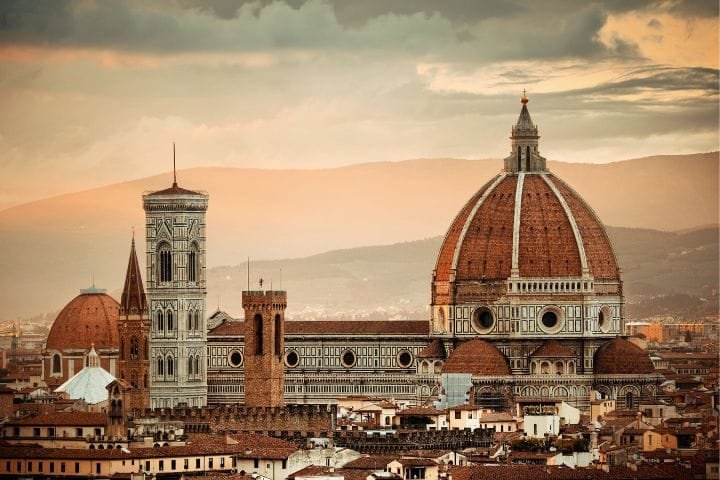
Welcome to my home! Florence is honestly the perfect size for exploring – you can walk everywhere, the art is absolutely world-class, and the food scene is incredible. Plus, you’re right in the heart of Tuscany, so day trips to wine country or hilltop towns are super easy. Two days here gives you time to see the Renaissance masterpieces and maybe escape to the countryside for some wine tasting.
Things to Do in Florence
Florence perfectly combines Renaissance art with authentic Tuscan experiences – what to do in Florence ranges from climbing the iconic Duomo and exploring the world-famous Uffizi Gallery to taking scenic day trips through the beautiful Chianti wine region. The city’s walkable size makes it easy to see everything, while its location in the heart of Tuscany opens up amazing countryside adventures.
Day 3: Florence Highlights
Here’s your one-day Florence hit list – the must-see highlights of a city that’s the beating heart of the Renaissance. Spending a full day here means immersing yourself in world-class art, breathtaking architecture, and that unmistakable Tuscan charm. With its compact, walkable layout, you can easily pack the best of Florence into a single, unforgettable day.
Duomo (Cathedral of Santa Maria del Fiore): The dome is Brunelleschi’s masterpiece and the symbol of our city. Climb to the top if you can handle 463 steps – the views over Florence and the Tuscan hills are absolutely worth it. The whole complex (cathedral, dome, bell tower, baptistery) needs separate tickets, so plan accordingly.
Uffizi Gallery: Home to the world’s best Renaissance art collection – Botticelli’s Birth of Venus, Leonardo da Vinci, Michelangelo, you name it. Book way ahead or you’ll be stuck in line for hours. Early morning or late afternoon slots are less crowded.
Ponte Vecchio: The famous bridge with jewelry shops built right on it. Yeah, it’s touristy, but it’s also genuinely beautiful, especially at sunset. The views from Ponte Santa Trinita (next bridge over) are even better for photos.
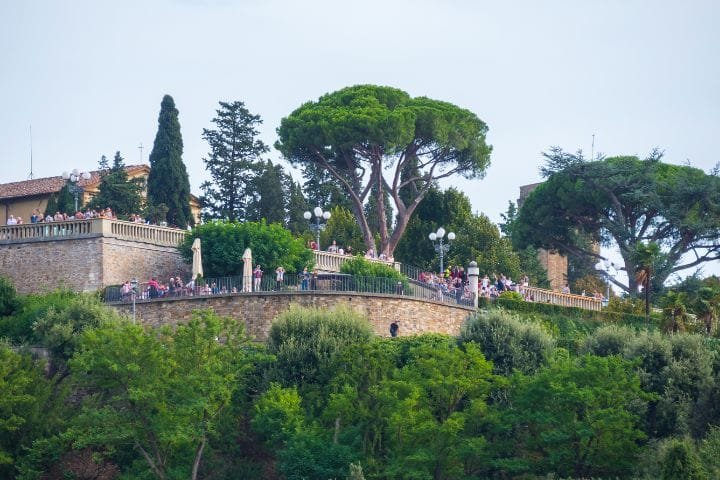
Oltrarno District: Cross the river to where locals actually live and work. Amazing artisan workshops, antique shops, and way fewer tourists. Perfect for afternoon wandering and authentic dining.
Piazzale Michelangelo: The classic sunset spot with panoramic views over the whole city. It’s a bit of a hike up the hill, but totally worth it. Bring a bottle of wine and join the evening crowd.
Day 4: Tuscany Day Trip Options
Rolling hills, medieval hill towns, and world-class wine make Tuscany the perfect day-trip destination from Florence. Whether you’re chasing postcard views in Siena, exploring the Leaning Tower in Pisa, or sipping Chianti in the countryside, a Tuscany day trip packs in the region’s best without rushing.
Pisa (1 hour by train): Obviously famous for the Leaning Tower, but the whole Piazza dei Miracoli is gorgeous. You can climb the tower if you book ahead, or just take the classic “holding up the tower” photo and explore the beautiful cathedral and baptistery.
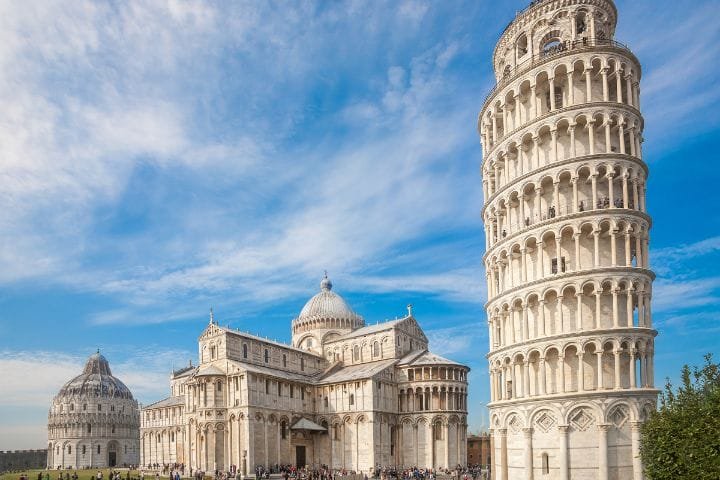
Siena (1.5 hours by bus): Medieval hilltop town with an incredible main square (Piazza del Campo) where they hold the famous Palio horse race. The Gothic cathedral is stunning, and the whole town feels like stepping back in time.
Chianti Wine Region (rent a car or join a tour): Rolling hills covered in vineyards, medieval castles, and family wineries where you can taste incredible wines. Towns like Greve in Chianti and Castellina are perfect for lunch and wine tasting.
San Gimignano (1 hour by bus): The “Medieval Manhattan” with its famous towers. Super touristy but honestly magical, especially if you stay for sunset when the day-trippers leave.
Where to Stay in Florence
If you’re wondering where to stay in Florence for sightseeing, day trips, or romantic evenings along the Arno, the city offers neighborhoods to match every type of traveler. Choosing the right area will help you maximize your time and soak in Florence’s Renaissance charm without spending hours commuting.
Santa Maria Novella area (near the train station), if you want easy transport connections and don’t mind being slightly outside the historic center. Tons of hotel options and you can walk to everything in 10-15 minutes.
Historic Center for maximum convenience – you’ll be steps from the Duomo, Uffizi, and all major sites. More expensive, but you can walk everywhere and really feel like you’re living in a Renaissance masterpiece.
Oltrarno if you want that authentic local vibe – quieter streets, local restaurants, and artisan workshops. My personal favorite area feels way more like real Florence and is still totally walkable to everything.
Budget tip: Look for places slightly outside the ZTL (restricted traffic zone) if you’re driving, or just stick with places near train/bus stops for easy day trip access.
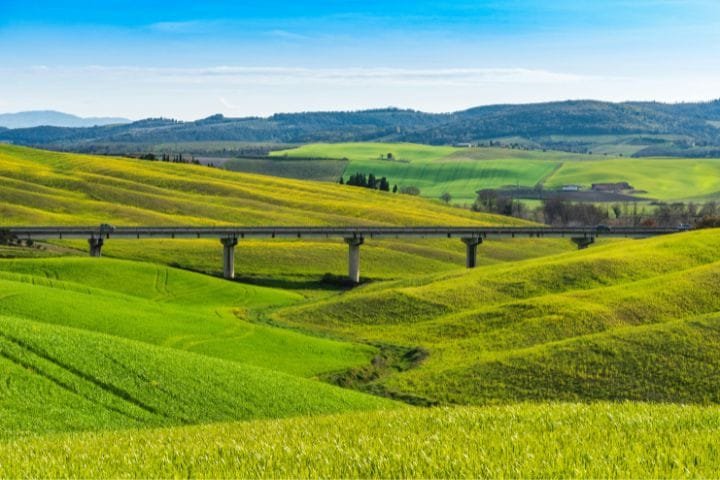
Day 5–6: Venice
Venice is honestly like nowhere else on Earth – a city literally floating on water where every corner feels like a movie set. It’s romantic, magical, and yeah, totally touristy, but there’s a reason millions of people fall in love with this place. Two days give you enough time to see the main highlights and maybe escape to some quieter islands.
Things to Do in Venice
Venice offers unforgettable experiences from exploring St. Mark’s magnificent basilica to gliding through canals on a gondola – what to do in Venice includes must-see landmarks, charming island excursions, and hidden neighborhoods where you can escape the crowds. The city’s unique layout means every walk becomes an adventure through centuries of maritime history.
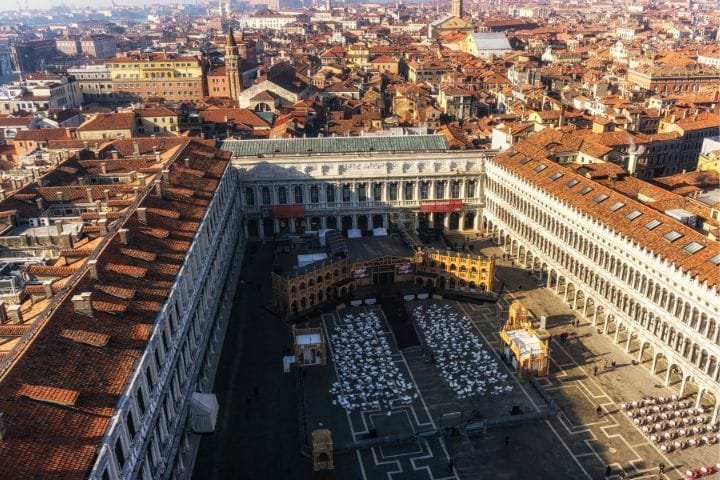
Day 5: Venice Main Highlights
St. Mark’s Square (Piazza San Marco): The heart of Venice and honestly one of the most beautiful squares in the world. The basilica is absolutely stunning with its golden mosaics and Byzantine architecture. Climb the bell tower (Campanile) for incredible views over the city and lagoon.
St. Mark’s Basilica: Free to enter and absolutely mind-blowing. The golden mosaics covering every surface tell biblical stories, and the whole place glows like a jewel box. Skip-the-line tickets are worth it during peak season.
Doge’s Palace: The former residence of Venetian rulers, connected to the prison by the famous Bridge of Sighs. The Golden Staircase and Hall of the Great Council are incredible, and you can actually walk across the bridge that prisoners used to cross.
Grand Canal: Take a vaporetto (water bus) ride along Venice’s main “street” – it’s like a moving tour of palaces, churches, and bridges. The views from Rialto Bridge are classic Venice photo material.
Rialto Market: A Morning fish and produce market that’s been running for over 1,000 years. Even if you’re not buying anything, it’s amazing to see how locals live and shop in this floating city.
Day 6: Islands and Hidden Venice
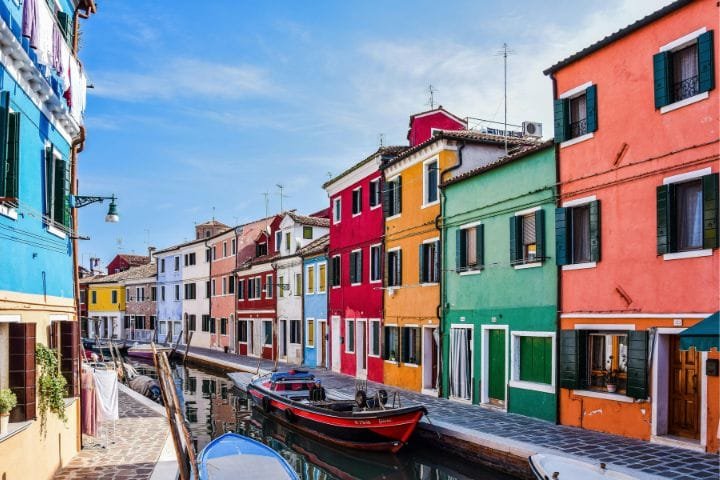
Venture beyond St. Mark’s Square to discover the quieter, more authentic side of Venice. Spend the day exploring the colorful canals of Burano, the glass-making traditions of Murano, and the peaceful charm of Torcello, then wander off the tourist trail to find tucked-away courtyards, local wine bars, and secret canals that most visitors miss.
Murano Island: Famous for glass-making since the 13th century. Watch artisans blow glass and visit the Glass Museum. The colorful houses and quiet canals are a nice break from Venice’s crowds.
Burano Island: Absolutely gorgeous island with rainbow-colored houses and incredible lace-making traditions. Super photogenic and way more peaceful than the main Venice. The seafood restaurants here are fantastic.
Gondola Ride: Yeah, it’s expensive (around €80 for 30 minutes), but honestly magical, especially at sunset. If you’re on a budget, share with another couple or take a traghetto (gondola ferry) for just €2.
Cannaregio District: Where Venetians actually live – quiet canals, local bars (bacari), and way fewer tourists. Perfect for authentic cicchetti (small plates) and wine tasting.
Dorsoduro: Artsy area with great museums like Peggy Guggenheim Collection, plus the beautiful Zattere waterfront for sunset walks.
Where to Stay in Venice
Choosing the right base can make or break your Venetian experience. If you’re wondering where to stay in Venice for first-time visitors, St. Mark’s Square puts you right in the heart of the action, just steps from iconic sights—though you’ll pay more and share the space with plenty of tourists.
San Marco, if you want to be in the absolute center of everything – you can walk to all major sites in minutes. Expect to pay premium prices and deal with crowds right outside your door, but the convenience is unbeatable.
Cannaregio for a more authentic Venetian experience – quieter canals, local restaurants, and you’ll feel like you’re living alongside actual Venetians. Still totally walkable to major sites, but way more peaceful.
Dorsoduro, if you want that artsy, university area vibe – great restaurants, fewer tourists, and beautiful canal views. The Zattere waterfront is perfect for morning runs or evening aperitivos.
Budget hack: Stay in Mestre on the mainland and take the 10-minute train into Venice. You’ll save tons of money and still have easy access to the city.
Day 7: Departure or Bonus Stop
Your last day really depends on where you’re flying out and how much energy you have left after six days of Italian adventures. If you’re flying from Venice, you can have a relaxed morning and head to the airport. But if you’re flying from Milan (super common with international flights), you’ve got a perfect excuse to check out Italy’s fashion capital.
What to Do in Milan
Milan surprises first-time visitors with its perfect blend of historic landmarks and modern sophistication – things to do in Milan range from exploring the magnificent Gothic Duomo to shopping in elegant galleries and experiencing the vibrant aperitivo scene in trendy canal districts. Even with just a few hours, you can get a great taste of why Milan is considered Italy’s design and fashion capital.
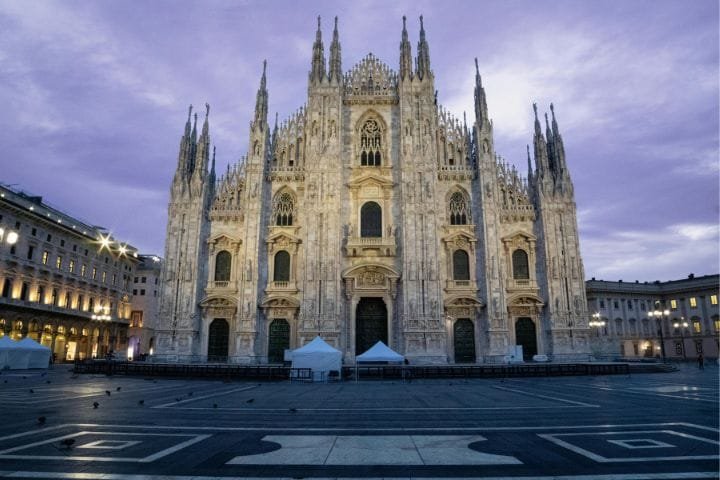
Milan Duomo: Absolutely stunning Gothic cathedral that took nearly six centuries to complete. Climb up to the roof terraces to walk among the spires and get incredible views over the city – it’s honestly one of the coolest experiences in Italy. The intricate details up close are mind-blowing.
Galleria Vittorio Emanuele II: Beautiful 19th-century shopping arcade connecting the Duomo to La Scala opera house. Even if you’re not shopping, it’s gorgeous architecture and perfect for people-watching. Spin your heel on the bull’s mosaic for good luck (local tradition).
Sforza Castle (Castello Sforzesco): Massive medieval castle that now houses museums and art collections, including Michelangelo’s last sculpture, the Rondanini Pietà. The castle grounds are perfect for a quick walk if you need a break from city streets.
La Scala Opera House: If you’re into music and have time, try to catch a performance or at least visit the museum. This is literally the most famous opera house in the world, and the history here is incredible.
Navigli Districts: Milan’s canal area designed partly by Leonardo da Vinci. Great for aperitivo, dinner, or just soaking up that Italian evening vibe before your flight home.
Brera District: Artsy neighborhood with galleries, boutiques, and fantastic restaurants. If you only have a few hours in Milan, this area gives you a great taste of the city’s style and culture.
Quick Milan tip: The city center is super compact and walkable. If you’ve got luggage, store it at Centrale station and explore hands-free. Milan’s also got excellent public transport if you need to cover more ground quickly.
Want to really experience Milan or explore Lake Como? Look, if you’re flying out of Milan anyway, seriously consider adding an extra day to your trip. Milan deserves more than just a quick airport dash – the city’s got incredible art, world-class shopping, and that sophisticated northern Italian vibe that’s totally different from Rome or Florence.
Plus, Lake Como is only 45 minutes away by train, so you could easily do a day trip to Como or Bellagio for those stunning lake views and villa gardens everyone’s always posting on Instagram. Yeah, it means eight days instead of seven, but trust me – you’ll be glad you gave yourself time to actually enjoy Milan instead of just rushing through it on your way to catch a flight.
Alternative 7-Day Italy Routes
Look, the Rome-Florence-Venice route is classic for a reason, but maybe you’re not into crowds or you want something totally different. Living here, I’ve seen tons of travelers have amazing experiences with alternative routes that focus on specific vibes – whether you’re all about coastal beauty or mountain adventures.
Route 1: Coastal Italy focuses on stunning sea views, romantic cliffside towns, and incredible seafood. Perfect if you want that Mediterranean dream with dramatic coastlines and charming fishing villages. This route works best April through October when everything’s open and the weather’s perfect for beach time.
Route 2: Northern Italy is all about dramatic mountain scenery, gorgeous lakes, and sophisticated cities. Ideal for people who love outdoor activities, alpine views, and that refined northern Italian culture. Plus, it’s amazing in summer when you can escape the heat, or winter if you’re into skiing and Christmas markets.
Get our FREE Italy
Travel Guide
E-Book
This printable guide is your ultimate companion for exploring Italy, with insider tips, detailed itineraries, transportation advice, must-see attractions, and more.

7 Day Coastal Italy Itinerary
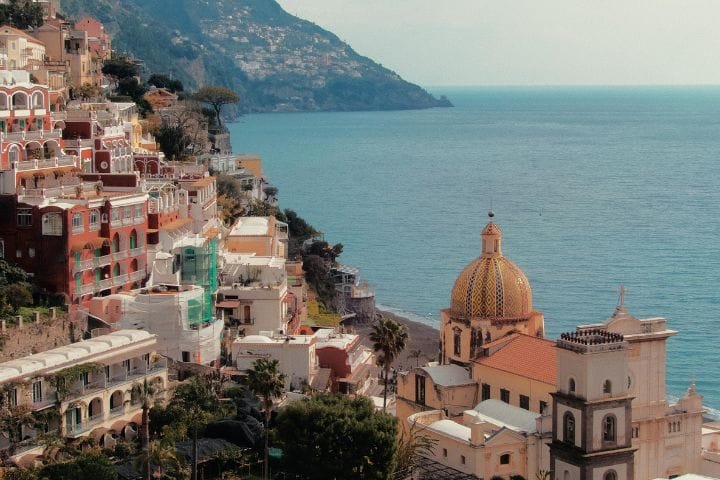
This 7-day Southern Italy itinerary blends coastal beauty, ancient history, and vibrant city life. Starting by exploring the cultural treasures of Naples before winding through Amalfi Coast cliffside roads and pastel-colored villages, and ending with the timeless landmarks of Rome. Perfect for travelers seeking a mix of seaside relaxation, archaeological wonders, and unforgettable food, this route can be enjoyed by car, train, or a combination of both.
| Days | Location | Main Highlights |
|---|---|---|
| Day 1–2 | 🇮🇹 Naples | 🍕 Historic center & Spaccanapoli, 🏛 National Archaeological Museum, 🌋 Day trip to Pompeii or Herculaneum (optional), ☕️ Espresso & sfogliatella. |
| Day 3–4 | 🇮🇹 Amalfi Coast | 🏖 Positano, Amalfi, Ravello, 🚗 Scenic coastal drive (SS163), ⛵ Capri boat trip (optional), 🌅 Cliffside sunsets. |
| Day 5–6 | 🇮🇹 Rome | 🏟 Colosseum & Roman Forum, 💧 Trevi Fountain, ⛪ Vatican City & St. Peter’s, 🍝 Dinner in Trastevere. |
| Day 7 | ✈️ Departure | If flying from Rome: ⛪ Duomo (St. John Lateran) nearby or a quick stroll by Piazza Navona; allow extra time for airport transfer. |
Why this route rocks: You get authentic southern Italian culture in Naples (seriously, the pizza here is life-changing), those Instagram-worthy Amalfi Coast views everyone dreams about, and finish with Rome’s incredible history. The whole vibe is more relaxed and coastal compared to the art-heavy classic route.
Transportation: Rent a car for the Amalfi Coast section – those winding coastal roads are part of the experience, even if they’re a bit scary. Train from Naples to Rome is super easy and comfortable.
🚗 Drive the Coast Like a Pro: Italy Road Trip Inspiration
If you are planning to drive this circuit, use these handpicked guides to make your Italian coastal adventure unforgettable:
👉 Amalfi Coast Road Trip Itinerary: This Year’s Complete Guide – Explore dramatic cliffs, pastel villages, and seaside dining along Italy’s most famous drive.
👉 Driving the Amalfi Coast: What You Need to Know – Essential tips for navigating hairpin turns and busy summer traffic.
👉 Drive from Rome to Amalfi Coast You’ll Never Forget – A scenic route packed with must-see stops along the way.
👉 Drive from Rome to Naples: The Scenic, Easy Way to Travel – How to make this short drive a highlight of your trip.
One Week in Northern Italy
This 7-day Northern Italy itinerary takes you from Milan’s fashion capital streets to the serene shores of Lake Como, through the dramatic Dolomite mountain passes, and finally into the romantic canals of Venice. Perfect for travelers who want a mix of cosmopolitan cities, scenic lakeside escapes, and alpine adventures, this route is ideal for driving in Italy or combining trains with short transfers. Along the way, you’ll experience world-class art, breathtaking landscapes, and authentic regional cuisine — all in one unforgettable week.
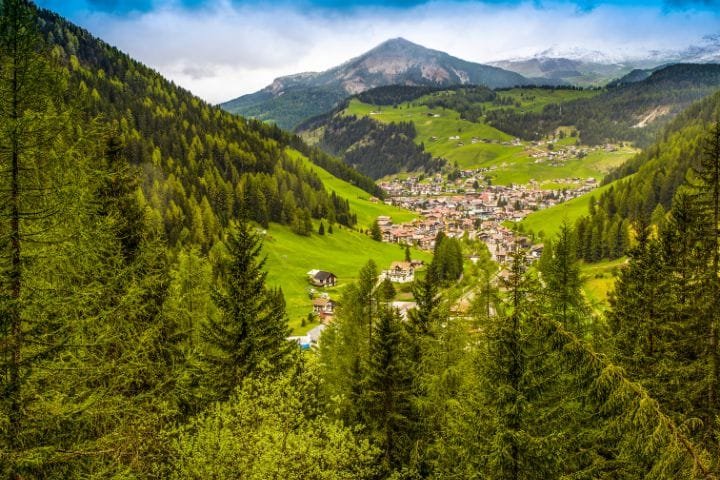
| Days | Location | Main Highlights |
|---|---|---|
| Day 1–2 | 🇮🇹 Milan | ⛪ Duomo, 🛍 Galleria Vittorio Emanuele II, 🎨 Leonardo’s Last Supper. 🍸 Aperitivo in Navigli district. |
| Day 3 | 🇮🇹 Lake Como | ⛵ Boat trip to Bellagio & Varenna. 🌸 Lakeside promenades & villa gardens. |
| Day 4–5 | 🇮🇹 Dolomites | 🏔 Scenic drives & mountain passes. 🚶 Hiking or 🚡 cable car views. |
| Day 6–7 | 🇮🇹 Venice | 🚤 Grand Canal, ⛪ St. Mark’s Basilica, 🌉 Rialto Bridge. 🛶 Gondola ride & Murano/Burano islands. |
Why this route is incredible: You get Milan’s sophisticated city vibe, Lake Como’s romantic villa culture (this is where celebrities vacation), the Dolomites’ absolutely insane mountain scenery, and end in magical Venice. It’s like seeing three different countries in one week.
Best time: June through September for mountain access, though Lake Como is gorgeous pretty much year-round. Winter works too if you’re into skiing and Christmas markets in the Dolomites.
Transportation: Rent a car for Lake Como and Dolomites flexibility, trains work great for Milan-Venice connections. The drives through Alpine scenery are honestly some of the most beautiful in the world.
Costs for a 7-Day Italy Trip (2025)
Alright, let’s talk money – because nobody likes budget surprises when they’re trying to enjoy their dream Italian vacation. From what I’ve seen helping friends plan their trips, costs can vary wildly depending on your style, timing, and how smart you are about booking things in advance.
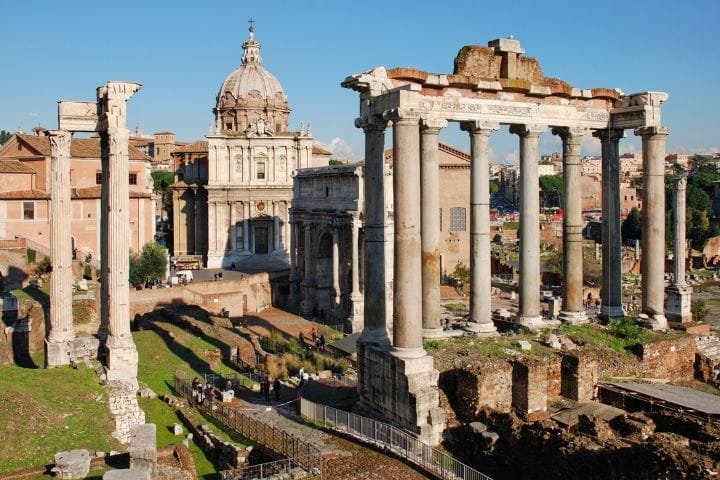
Budget Breakdown
Budget Traveler (€900–€1,200 per person): This is totally doable if you’re willing to stay in hostels, eat lots of street food and local spots, and take regional trains instead of the fancy high-speed ones. You’ll still see everything amazing, just with less comfort and more planning required.
- Accommodation: €25-40/night (hostels, shared rooms)
- Food: €20-30/day (street food, markets, local trattorias)
- Transportation: €150-200 total (regional trains, city transport)
- Activities: €100-150 total (major sites, mostly free attractions)
Mid-Range Traveler (€1,400–€1,900 per person): This is the sweet spot where you can relax and enjoy without constantly worrying about money. Nice hotels, good restaurants, high-speed trains, and you can be spontaneous without breaking the bank.
- Accommodation: €80-150/night (3-star hotels, nice Airbnbs)
- Food: €40-60/day (mix of local and tourist restaurants)
- Transportation: €200-300 total (high-speed trains, occasional taxis)
- Activities: €200-300 total (all major attractions, some tours)
Luxury Traveler (€2,500+ per person): Sky’s the limit here – beautiful hotels, Michelin restaurants, private tours, and zero stress about money. You’ll have incredible experiences and maximum comfort, but obviously, it comes with a price tag.
- Accommodation: €200-500+/night (4-5 star hotels, luxury locations)
- Food: €80-150+/day (fine dining, wine tastings, exclusive experiences)
- Transportation: €300-500+ total (first-class trains, private transfers)
- Activities: €400-800+ total (private guides, exclusive access, premium experiences)
Cost-Saving Tips
Stay in smaller towns near main cities – Places like Mestre (near Venice) or suburbs around Florence can cut accommodation costs in half while still giving you easy access to everything.
Book trains early – High-speed train prices can literally double if you wait until the last minute. Book 2-4 weeks ahead and you’ll save tons of money.
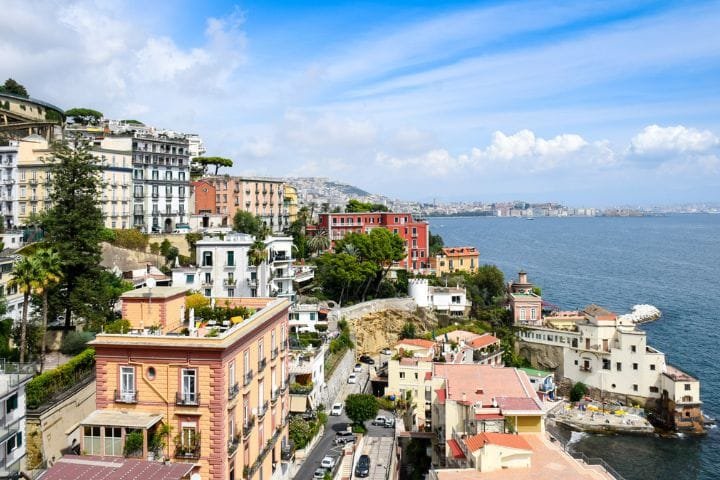
Eat at local trattorias instead of tourist restaurants – Walk three blocks away from major attractions and you’ll find authentic places with half the prices and way better food. Look for places full of Italians, not tourists with cameras.
Take advantage of free stuff – So many churches have incredible art for free, walking around historic centers costs nothing, and aperitivo hour (6-8 PM) often includes free food with drinks.
Travel during shoulder season – April-May and September-October have great weather but way lower prices than summer madness. Plus, fewer crowds means you’ll actually enjoy the experience more.
Insider Travel Tips for First-Time Visitors
Alright, real talk time – I’ve been living in Florence forever, and I’ve seen the same tourist mistakes happen over and over again. These aren’t the obvious tips you’ll find everywhere online; these are the things that’ll actually save your trip from turning into a stressful mess.
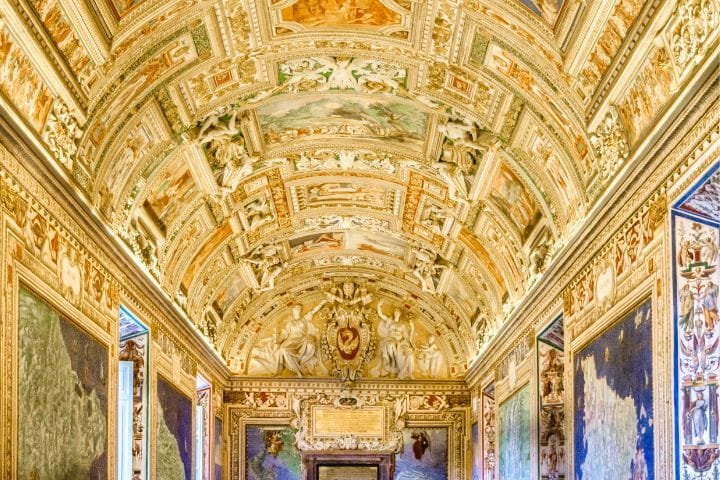
Book skip-the-line tickets early – Look, this isn’t optional anymore. I’ve literally watched people have meltdowns because they couldn’t get into the Uffizi or Vatican Museums. These places sell out weeks in advance, especially during peak season. Book online 2-4 weeks ahead and yes, pay the extra few euros for timed entry. Your sanity is worth it.
Learn about ZTL zones if you’re driving – This one gets everyone, and it’s expensive. ZTL (Zona a Traffico Limitato) are restricted traffic zones in historic city centers. Drive into one without permission and boom – €80-200 fines that show up on your credit card months later. Every major Italian city has them; they’re not always clearly marked, and rental companies basically act like they don’t exist. Ask your hotel about access, or just park outside these zones and walk.
Pack light for trains – Italian train stations are gorgeous, but they’re old, which means tons of stairs and escalators that break constantly. I see tourists every single day struggling with massive suitcases, sweating, and cursing while trying to get to their platform. One carry-on size bag per person, make sure it has decent wheels, and you’ll glide through stations while everyone else is having a miserable time.
Choose accommodation close to transport hubs – Stay within walking distance of train stations or major bus stops. That cute Airbnb that’s 30 minutes outside the city center might look charming online, but you’ll spend half your vacation time just getting to and from attractions. Near Termini in Rome, Santa Maria Novella in Florence, close to Venice’s train station – might sound boring, but it’s smart.
Download offline maps and carry cash – Cell service gets weird in historic centers (all those thick medieval walls), and tons of smaller places still prefer cash over cards. Download Google Maps for offline use and hit an ATM when you arrive instead of getting ripped off at airport exchanges.
Eat where locals eat – If there’s a menu in five languages right next to the Colosseum, keep walking. The best food is always 2-3 blocks away from major tourist sites. Look for places packed with Italians, especially during lunch when locals are actually eating. No photos of food on the menu is usually a good sign.
Respect the afternoon break – Most shops close 1-4 PM, especially in smaller towns. Don’t fight it, embrace it. Perfect time for a long lunch, museum visits, or just chilling in a piazza with a drink. Fighting against Italian rhythms instead of going with the flow is a guaranteed way to stress yourself out.
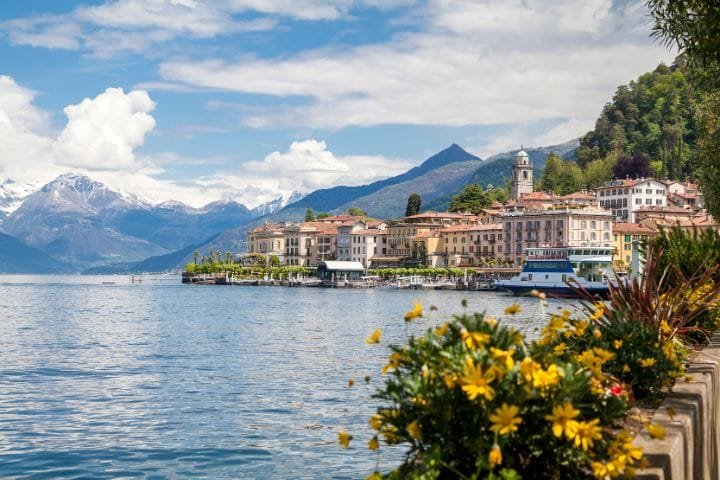
Seasonal Tips for Visiting Italy
- Spring: Flower festivals, mild weather, and blooming landscapes.
- Summer: Peak crowds, higher prices, and long daylight hours.
- Fall: Wine harvest season, vibrant autumn colors, and fewer tourists.
- Winter: Christmas markets, snow in the Alps, and off-season deals in major cities.
FAQs on 7 Days Italy Itinerary
Is 7 days enough to see Italy?
Seven days is perfect for first-timers to see Italy’s highlights without feeling rushed. You can comfortably visit Rome, Florence, and Venice while getting a real taste of Italian culture. You won’t see everything (honestly, even locals are still discovering new places), but you’ll experience enough to fall in love with the country and plan your next trip back.
What’s the best route for first-time visitors?
The classic Rome-Florence-Venice triangle is unbeatable for first-timers. Start in Rome for ancient history, move to Florence for Renaissance art and Tuscan culture, then finish in magical Venice. This route flows perfectly with train connections and gives you three completely different Italian experiences in one week.
Is it better to rent a car or take trains for this itinerary?
Trains are definitely the way to go for the main cities. Italy’s high-speed rail is incredible – Rome to Florence takes just 1.5 hours, and you’ll arrive right in city centers instead of dealing with traffic and parking nightmares. Save car rentals for Tuscany day trips if you want to explore wine country at your own pace.
How much does 7 days in Italy cost?
Budget travelers can do it for €900-1,200 per person, mid-range travelers should expect €1,400-1,900, and luxury travelers will spend €2,500+. The biggest variables are accommodation location, dining choices, and transportation type. Book trains early and eat where locals eat to keep costs reasonable.
Can I add Amalfi Coast to a 7-day itinerary?
You can, but it means sacrificing one of the main cities or feeling really rushed. The Amalfi Coast deserves at least 2-3 days to properly enjoy, so you’d need to skip either Rome, Florence, or Venice. Better to save the coast for a dedicated southern Italy trip or extend your vacation to 10+ days.
Is this trip suitable for kids or seniors?
Absolutely! The train-based itinerary is actually perfect for families and older travelers – no crazy driving, lots of walking but at your own pace, and plenty of gelato stops to keep everyone happy. Just book accommodations near train stations to minimize luggage hauling, and consider skip-the-line tickets to avoid long waits in the heat.
Get our FREE Italy
Travel Guide
E-Book
This printable guide is your ultimate companion for exploring Italy, with insider tips, detailed itineraries, transportation advice, must-see attractions, and more.

💬 We’d love to hear from you!
Have questions, tips, or personal travel stories to share? Drop them in the comments below — your insights help fellow travelers plan their adventures too.




